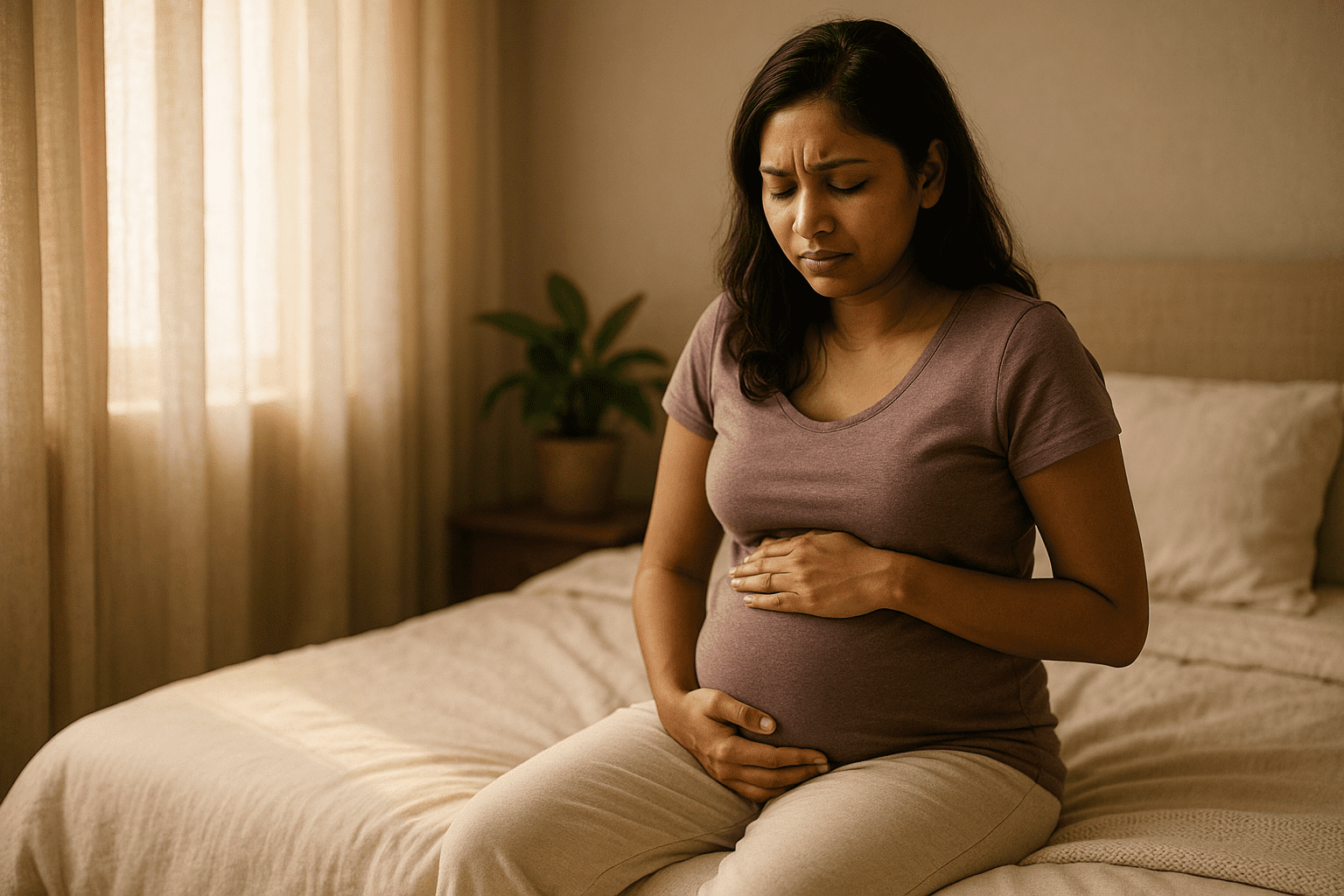Engorged breasts after delivery can feel like your body’s playing a cruel joke. One day you’re marvelling at the miracle of birth, and the next, your chest feels like it’s made of hot, heavy bricks.
It’s a painful, swollen reality that no one warns you enough about. I remember my first night home with Sreyansh. My breasts were so engorged, even holding him close felt unbearable.
So let’s talk about how to soothe engorged breasts with the care and calm your body deserves. These aren’t miracle hacks, but gentle, effective methods I’ve recommended to hundreds of new moms in my clinic.
Why Do Breasts Become Engorged After Delivery?
When your milk comes in, typically around day 3 or 4 postpartum, your breasts start producing more milk than your baby might need initially. Blood flow increases, lymphatic fluids build up, and the result is engorged breasts.
They feel full, firm, and achy. Sometimes even shiny or warm to touch.
This is your body adjusting, but that doesn’t make it easy.
Signs Your Breasts Are Engorged
| Symptom | Description |
|---|---|
| Hard, swollen breasts | Often both sides, with visible tightness |
| Tender or painful | Can range from dull ache to sharp pain |
| Flattened nipples | Baby may struggle to latch |
| Warmth or redness | Due to increased blood flow |
| Milk leakage | Often occurs in between feeds |
6 Natural Ways to Ease Engorged Breasts
1. Warm Compress Before Feeding
A warm compress for breastfeeding can stimulate milk flow and soften the breast before a feed. I used to microwave a clean washcloth, wrap it in a soft towel, and place it on my chest for 2–3 minutes before nursing.
2. Gentle Massage and Hand Expression
Breast milk buildup can worsen if milk isn’t draining properly. Gently massaging the breast from outer areas toward the nipple and then hand-expressing some milk can help ease pressure.
3. Cold Packs Between Feeds
For breast engorgement relief, cold works better after a feed. Wrap ice packs in a muslin cloth and apply for 15 minutes. It helps bring down swelling and numbs the pain.
4. Feed Frequently, On Demand
Swollen breasts after delivery are a sign your supply is ready! Let your baby guide the feeds. Don’t wait for a strict schedule.
5. Reverse Pressure Softening
This technique involves using your fingers to gently push fluid back into the chest wall around the nipple area. It helps the nipple protrude so baby can latch properly.
6. Know When to Pump (But Don’t Overdo It)
Many moms ask me, “When to pump with engorged breasts?” Only if your baby hasn’t fed in a while and you feel full to bursting. Over-pumping can signal your body to make even more milk.
Is It Engorgement or Mastitis?
Mastitis is a breast infection that can happen when milk is not effectively removed from the breast, often due to blocked milk ducts. It leads to inflammation and, in some cases, infection of the breast tissue.

Common symptoms of mastitis include:
- Breast pain or burning while breastfeeding
- Redness, often in a wedge-shaped area
- Swelling and heat
- High fever or chills
- General body aches or flu-like feeling
It’s easy to confuse engorged breasts with mastitis because both can cause swelling and tenderness. But mastitis usually includes signs of infection like fever and body aches, which engorgement alone does not.
If you notice these additional symptoms, it’s best to contact your doctor right away. Early treatment helps prevent complications.
Here’s a helpful resource from Mayo Clinic.
How Long Does Breast Engorgement Last?
Usually, the worst of it lasts 24–48 hours. If you breastfeed often and relieve fullness gently, the body adapts.
But if left unmanaged, engorged breasts can lead to plugged ducts or infection.
What I Tell Every New Mom
Whether it’s your first baby or your third, breast changes in the first-week postpartum can feel overwhelming.
I’ve sat with countless mothers, massaged their backs while they cried through their letdowns, and reminded them: this too shall pass.
And if it doesn’t? You have options. Consult a lactation expert. Read real guidance like our own Pregnancy Myths and Facts blog. You’re not alone.
Final Note from My Heart
When Shriya was born, I thought breastfeeding would be intuitive. But I ended up with cracked nipples and engorged breasts by day two.
My mom gave me a simple tip , cabbage leaves from the fridge, tucked into my bra. Old-school, but it helped. More than anything, it was her calm that comforted me.
So if you’re reading this at 2 AM, holding a warm compress in one hand and a crying baby in the other, know this: you’re doing great.
This pain is temporary. Your body is powerful. And relief is possible.
FAQs About Engorged Breasts
Q1: What causes engorged breasts after delivery?
Engorged breasts are caused by increased blood flow and milk production, usually around day 3–5 postpartum, when the milk “comes in.”
Q2: How long do engorged breasts typically last?
Engorged breasts often improve within 24–48 hours with proper breastfeeding or milk expression.
Q3: Can I breastfeed with engorged breasts?
Yes, breastfeeding helps relieve engorged breasts by encouraging milk flow. A warm compress beforehand may help soften the breast for easier latch.
Q4: Should I pump when I have engorged breasts?
You can pump for comfort if your baby hasn’t fed, but avoid over-pumping as it may increase engorgement.
Q5: What’s the difference between engorged breasts and mastitis?
Engorged breasts are swollen and painful but mastitis includes symptoms like fever, chills, and redness indicating infection.

Meet Dr. Sonia Iyer — a seasoned gynecologist, mom of two, and trusted voice for women navigating the beautiful chaos of pregnancy and early motherhood. With over 11 years of clinical experience and a deep understanding of real-life parenting, she brings clear, compassionate, and expert-backed advice to every blog she writes.



